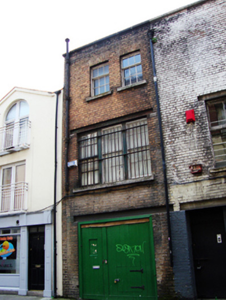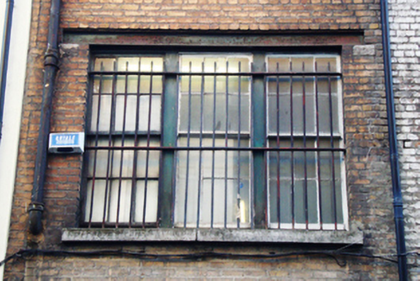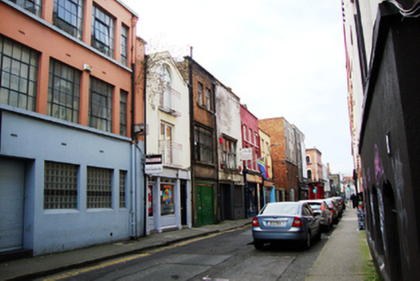Survey Data
Reg No
50010368
Previous Name
Gerald Kenyon Fine Art & Antiques
Original Use
Store/warehouse
In Use As
Shop/retail outlet
Date
1790 - 1810
Coordinates
315453, 234297
Date Recorded
06/12/2011
Date Updated
--/--/--
Description
Terraced three-bay three-storey warehouse, built c.1800. Long hipped roof, hidden behind parapet wall, having octagonal cast-iron hopper and rainwater goods shared with no. 5 Great Strand Street to west. Cast-iron steam pipe rising from above first floor level to above parapet. Red brick walls laid in English garden wall bond, having granite coping to parapet. Yellow brick wall laid in Flemish bond above second floor to east elevation. Gauged brick square-headed window openings to second and first floor level, having brick reveals and granite sills. Three-over-six pane timber sliding sash windows to second floor. Tripartite square-headed window opening to first floor under steel lintel, having exposed brick reveals and concrete sills. Three six-over-six pane timber sliding sash windows and metal railings spanning width of first floor window opening. Square-headed opening with timber battened door and gate to ground floor, steel lintel over. Small hatch to gate opening on cast-iron hinge plates.
Appraisal
Great Strand Street was initiated by Humphrey Jervis, Lord Mayor of Dublin in 1681-3, who laid out the area around Saint Mary’s Abbey after buying much of this estate in 1674. Jervis developed a network of streets arranged in a nine-square grid, including Jervis Street, Stafford Street (now Wolfe Tone Street), and Capel Street, as well as building Essex Bridge. This late eighteenth-century industrial warehouse forms part of the industrial fabric of this historic area. It was built as a pair with No.5 to the west, sharing a central hopper and parapet height. The parapet of No.6 is half a storey higher than No.7 to the east, adding interest and variety to the roof line. Its sash windows and brickwork are a reminder of the eighteenth-century character of this historic street while the traditionally laid brick with its subtle colour variations adds a deeper patina of age to the public realm. The warehouse faces onto tall late twentieth-century apartment blocks, and the historic setting has been diluted by twentieth-century hotels and apartment blocks, but the historical industrial identity of the warehouse has been retained.





